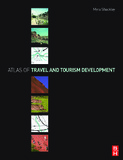Atlas of Travel and Tourism Development
Abstract
The geography of travel and tourism as it is taught today is destination-focused, with students able to avail
themselves of excellent textbooks which examine the geography of demand and present a balanced view of des-tination development. However, in the writer’s view insufficient attention is paid to the historical factors that
underpin destination development. With a very few exceptions, little has been published that explores tourism’s
history. Indeed, this is usually consigned to a small portion of the introductory chapter in tourism textbooks,
and even there the development of travel and tourism in the ancient world is skimmed over in favour of more
detailed analysis of the period following the development of the jumbo jet and the package holiday in the
1970s. And yet the early history of tourism is fascinating; all the elements of the modern package tour were in
place in the Bay of Naples by 50 BC, for example. The history of tourism as a leisure activity goes back well
before the classical civilizations of Greece and Rome. Egyptians participated in voyages of exploration and dis-covery in the fourth millennium BC. By the time that powerful Old Kingdom pharaohs such as Rameses II
(probably the pharaoh of the biblical Exodus) reigned, the pyramids at Giza (p. 27) had been visitor attractions
for a thousand years. The first tourist-related graffiti date back to 1244 BC (p. 26), the ancestor of modern
Michelin guides was available to Roman tourists in Europe (p. 12), and merchant shipping crossing the
Mediterranean carried passengers 2000 years earlier. There are few trends in modern tourism that cannot be
paralleled several thousand years in the past.
The history of travel is, of course, as ancient as the history of humanity, but it would be reasonable to say that
few significant developments in travel technology took place before the invention of the wheel around 3000 BC,
although initially its benefits were geographically limited to the Near East. And yet entire complex societies,
such as the Incas, managed without the wheel or the domesticated horse, as indeed many societies do today.
Contemporary travel in parts of Asia and Africa, for example, is almost exclusively carried out on foot, just as
travel in the Amazon Basin is carried out by water. Innovations in travel technology are only useful if the envir-onment in which a culture is living is suitable for their use. Early sea-borne travel involved simple dug-out
boats, and it is easy to chart their evolution through to the great clinker-built sailing boats of the Vikings, and
indeed to the vast ocean liners of today. As with land-based travel, the need to travel was initially restricted to
war, politics, economics and religion, and only in the modern world is it related to the pursuit of leisure.

